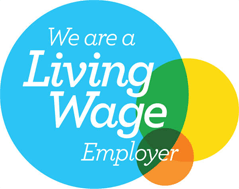FAQs: Advice for Employers on the Extended Coronavirus Job Retention Scheme
The Coronavirus Job Retention Scheme (furlough) ended on 30 September 2021.
The Coronavirus Job Retention Scheme has been extended until 30 September 2021. Our expert Employment Law solicitors explain what this means for employers. For Frequently Asked Questions about the original Coronavirus Job Retention Scheme, click here.
This page was updated on 1 July 2021
- Can you furlough your employees after 30 April 2021?
- Which workers does the Extended Coronavirus Job Retention Scheme (ECJRS) apply to?
- What grants can you claim and what do you have to contribute if you place my employees on the new extended furlough scheme?
- How often can you put in a claim under the ECJRS for a furloughed employee’s wages?
- You recently made a member of staff redundant– can you reinstate them and put them on furlough instead?
- How long will the ECJRS run for?
- Can you make your employees redundant so they serve their notice period while on furlough?
- Can you still claim for the Job Retention Bonus?
- Who will know that your company is using the ECJRS?
- Do you need to issue new letters / agreements to your employees for the extended furlough scheme?
- Is there a maximum number of employees you can claim for under the scheme?
- As the Furlough Scheme is being phased out from 30 September 2021, what else can you do to protect your business as your revenue streams have dropped?
- Your employee needs to care for their children whilst schools are closed. Can you place them on furlough?
- Your employee is shielding. Can you place them on furlough?
- Your employee has taken 2 weeks off due to stress. Can you furlough them?
- Can you place a maternity returner on furlough and how much will you pay her?
- Can your maternity returner take and be paid for holiday?
- Your employee has tested positive for Covid. Do you have to furlough them?
- Your employee has gone on long term sick leave due to a disability. Do you need to furlough them?
Can you furlough your employees after 30 April 2021?
The Coronavirus Job Retention Scheme has been extended until 30 September 2021. Eligible employees can be placed on furlough leave, even if they have not been furloughed before.
Which workers does the Extended Coronavirus Job Retention Scheme (ECJRS) apply to?
For periods before 30 April 2021, your employees are eligible for furlough if they were on the payroll on or before 30 October 2020.
For periods from 1 May 2021, you can claim for employees who were on the payroll on or before 2 March 2021.
If they were dismissed or their employment ended after 23 September 2020 they can be reinstated to claim this furlough grant.
What grants can you claim and what do you have to contribute if you place your employees on the new extended furlough scheme?
Until 30 June 2021, you can claim 80% of your employee’s usual salary for hours not worked, up to a maximum of £2,500 per month. You will still have to pay for employer National Insurance contributions and pension costs.
The level of grant will be reduced from 1 July 2021. For claims from 1 July – 31 July, the government will contribute 70% of an employee’s usual salary, and you will have to top this up to 80%. From 1 August 2021, the government contribution drops to 60%, with you as the employer making this up to 80%.
How often can you put in a claim under the ECJRS for your furloughed employee’s wages?
The new extended scheme merely requires that you need to claim for a minimum of 7 calendar days and employees must be eligible. If they are dismissed or have left after the 23 September 2020 then they can be reinstated to claim this furlough grant.
You recently made a member of staff redundant– can you reinstate them and put them on furlough instead?
Yes, as long as they were on payroll on 23 September 2020.
How long will the ECJRS run for?
The new extended furlough scheme will now run until 30 September 2021.
Can you make your employees redundant so they serve their notice period while on furlough?
This is not possible any longer. The new guidance states that for the period 1 November – 1 December 2020, claims may be made if the employee is serving statutory notice only. So if your employee has 3 months contractual notice but has only worked for you for 4 years, then only 4 weeks can be subsidised by the furlough grant.
For any period you claim on or after 1 December you cannot claim for any period your employee is serving either statutory or contractual notice. This includes people serving notice of retirement or resigning.
Can you still claim for the Job Retention Bonus?
No, this has been withdrawn. It is not clear whether or not it will be reintroduced.
Who will know that my company is using the ECJRS?
For claim periods from December 2020, HMRC will publish the name of each employer using the scheme and a reasonable indication of the amount claimed.
Do you need to issue new letters / agreements to your employees for the extended furlough scheme?
We recommend issuing an agreement or letter setting out the terms of the extended or new furlough arrangements. Although your employee does not have to confirm their acceptance, it is a good idea to obtain this in writing. This will help all parties understand the new arrangements and reduces the risk of claims at a later date.
Is there a maximum number of employees you can claim for under the scheme?
No, from 1 November onwards there is no maximum number of employees that you can claim for under the scheme. The previous limit which had applied from 1 July until 31 October has been removed.
As the Furlough Scheme is being phased out from 30 September 2021, what else can you do to protect your business as your revenue streams have dropped?
If it is clear that you are going to have to restructure your business and or make provisions for the phasing out and end of the furlough scheme then alternatives include:
Salary sacrifice where everyone gives up a percentage of their salary for a defined period. This can be offered as an alternative to redundancies and your employees must agree to this.
Part time working
Again, this can be offered as an alternative to redundancy and you need your employees’ agreement to this.
Redundancy / restructuring
Many employers are already gearing up to restructure their business so that the people they are making redundant can be served notice while they are still on full 80% furlough pay.
We would recommend that any notice is paid at ‘normal remuneration’ if not topping up the 80%. This is unless your employee agrees to accept the furlough pay in
stead of their notice pay. The redundancy process must be fair and include a fair selection process. Accrued holiday will also need to be paid.
Your employee needs to care for their children. Can you place them on furlough?
You can place an employee on furlough if they have caring responsibilities, as long as they are eligible. However, this is not mandatory and it is up to you to decide if you want to do this.
Your employee is shielding. Can you place them on furlough?
Government advice for people who are told to shield due to being clinically extremely vulnerable is to work from home if possible. If they cannot work from home then they should not attend work. You can place a shielding employee on furlough as long as they are eligible. This is optional and it is up to you as the employer whether you would decide to do this.
Your employee has taken 2 weeks off due to stress. Can you furlough them?
If you wish to furlough an employee who is currently off sick for business reasons, you are entitled to do so. If they are already on sick pay you would stop this to put them on furlough pay as long as they are eligible.
Can you place a maternity returner on furlough and how much will you pay her?
Yes. You will calculate her furlough pay based on her salary not her statutory maternity benefit and you can pay her 80% if she agrees.
Can your maternity returner take and be paid for holiday?
Annual leave can be taken while she is on furlough. You will be able to claim support from HMRC to help cover the cost of her annual leave but she must receive full holiday pay.
Your employee has tested positive for Covid. Do you have to furlough them?
If your employee is on sick leave or is self-isolating as a result of the coronavirus then they may be able to get Statutory Sick Pay.
The furlough scheme is not intended for short-term absences from work due to sickness.
Your employee has gone on long term sick leave due to a disability. Do you need to furlough them?
If you want to furlough employees who are currently off sick, and this is for business reasons, then you are eligible to do so. In these cases, your employee should no longer receive sick pay and would be classed as a furloughed employee.
For expert advice on furlough leave and the Extended Coronavirus Job Retention Scheme, contact our Employment Law Team on 01273 609911, or email info@ms-solicitors.co.uk.


